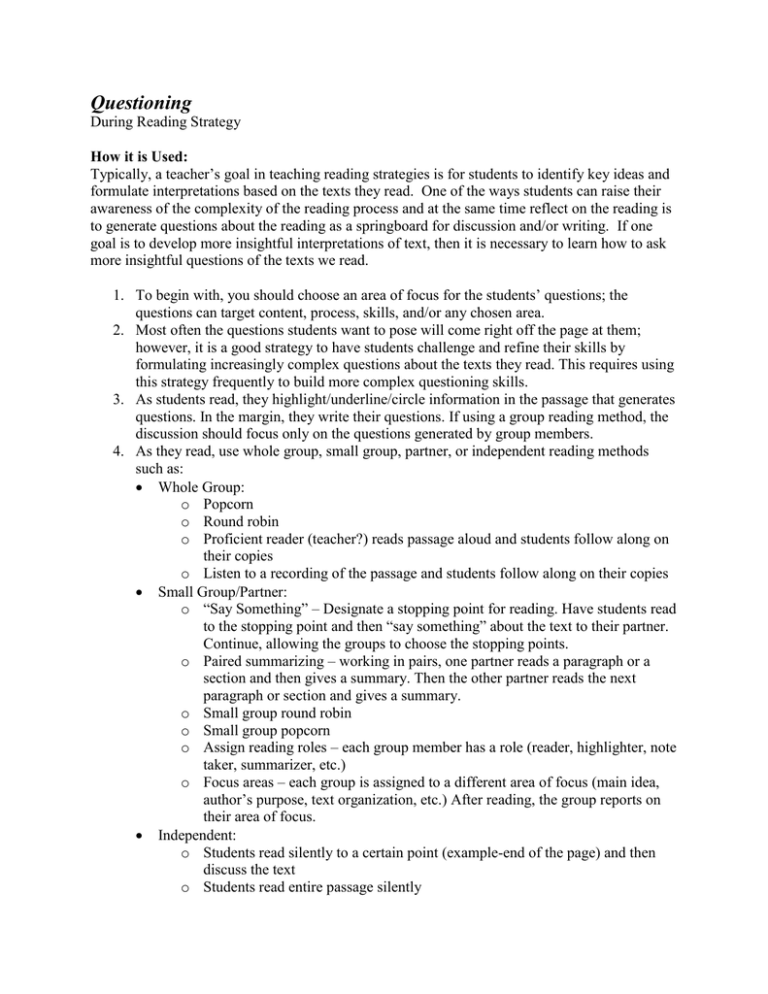Questioning
advertisement

Questioning During Reading Strategy How it is Used: Typically, a teacher’s goal in teaching reading strategies is for students to identify key ideas and formulate interpretations based on the texts they read. One of the ways students can raise their awareness of the complexity of the reading process and at the same time reflect on the reading is to generate questions about the reading as a springboard for discussion and/or writing. If one goal is to develop more insightful interpretations of text, then it is necessary to learn how to ask more insightful questions of the texts we read. 1. To begin with, you should choose an area of focus for the students’ questions; the questions can target content, process, skills, and/or any chosen area. 2. Most often the questions students want to pose will come right off the page at them; however, it is a good strategy to have students challenge and refine their skills by formulating increasingly complex questions about the texts they read. This requires using this strategy frequently to build more complex questioning skills. 3. As students read, they highlight/underline/circle information in the passage that generates questions. In the margin, they write their questions. If using a group reading method, the discussion should focus only on the questions generated by group members. 4. As they read, use whole group, small group, partner, or independent reading methods such as: Whole Group: o Popcorn o Round robin o Proficient reader (teacher?) reads passage aloud and students follow along on their copies o Listen to a recording of the passage and students follow along on their copies Small Group/Partner: o “Say Something” – Designate a stopping point for reading. Have students read to the stopping point and then “say something” about the text to their partner. Continue, allowing the groups to choose the stopping points. o Paired summarizing – working in pairs, one partner reads a paragraph or a section and then gives a summary. Then the other partner reads the next paragraph or section and gives a summary. o Small group round robin o Small group popcorn o Assign reading roles – each group member has a role (reader, highlighter, note taker, summarizer, etc.) o Focus areas – each group is assigned to a different area of focus (main idea, author’s purpose, text organization, etc.) After reading, the group reports on their area of focus. Independent: o Students read silently to a certain point (example-end of the page) and then discuss the text o Students read entire passage silently 5. After they finish reading, have students work in pairs or small groups to discuss the questions they generated and answers to these questions. Answers can come from the text or from connections and inferences they make in response to the text. Why it Works: Fluent readers ask questions when they read because it helps them understand what they are reading. Good readers develop their own questions, and those questions are really the most important ones. When readers ask questions as they read, it keeps them thinking about the words and ideas in the passage. It makes them want to read on. Asking questions also helps them when they are confused, because students identify what is confusing them and automatically begin to look for answers in the text.


